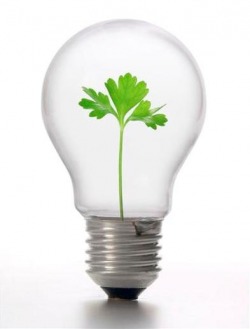
Mumbai: The number of carbon credits issued for emission reduction projects in India is set to triple over the next three years to 246 million by December 2012 from 72 million in November 2009, according to a CRISIL Research study.
This will cement India’s second position in the global carbon credits market (technically called Certified Emission Reduction units or CERs). The growth in CER issuance will be driven by capacity additions in the renewable energy sector and by the eligibility of more renewable energy projects to issue CERs. Consequently, the share of renewable energy projects in Indian CERs will increase to 31 per cent.
CRISIL Research expects India’s renewable energy capacity to increase to 20,000 MW by December 2012, from the current 15,542 MW.
According to Mr. Nagarajan Narasimhan, Director, CRISIL Research, “We expect the government’s focus on renewable energy power projects to drive this growth. Distribution utilities already have to meet 5% of their power requirements from renewable sources, and this proportion will increase to 15% by 2020, leading to a growth in installed capacity. As more of these projects register with UN Framework Convention on Climate Change (UNFCCC), CER issuance volumes will increase.”
The current share of renewable energy projects in CERs is just 19 per cent; only 284 of the 1846 renewable power projects in India are registered with UNFCCC.
CRISIL Research believes that CER issuance, purely from registration of existing and new renewable energy projects,will increase to 76 million by December 2012, from 14 million in November 2009. Assuming a price of Euro 10 for one CER, additional issuances of CERs from renewable energy projects will be worth about Rs 40 billion by December 2012.
Source: The Economic Times

Pune: Thermax Ltd has signed a technology transfer licence agreement with Lambion Energy Solutions, a German engineering company with expertise in converting waste to energy. The agreement was signed by Mr Hemant Mohgaonkar, Executive Vice-President, Thermax, and Mr Axel Lambion, Managing Director, Lambionis. It is valid for five years.
The technology transfer will provide Thermax with high efficiency combustion systems for using biomass that is high in moisture content for energy generation. These will be integrated in boilers and heaters with heat output ranging from 4 MW to 30 MW.
Thermax will have an exclusive licence to market heating systems, equipped with the new technology in India and SAARC countries, South East Asia, Middle East and Africa.
Though Thermax has been offering its clients biomass-based equipment for energy generation for three decades. The technology upgrade will equip it with advanced systems to provide industry eco-friendly ways of extracting energy from waste.
Mr M.S. Unnikrishnan, Managing Director and CEO, Thermax, said, “The new technology infusion will reinforce our product offerings in the area of green energy.”
For Lambion the partnership offers an opportunity to promote its expertise in new markets.
Source: The Hindu Business Line

NEW DELHI: THE Indian arm of PepsiCo has become the first of its global units to put more water back into the environment than it consumes, the company said.
The beverage giant has achieved ‘positive water balance’ by recharging 6 billion litres and using 5.17 billion litres during 2009 with a net saving of 836 million litres. PepsiCo, which has 45 beverage bottling and snacks plants in India, said the figures were verified by audit firm Deloitte Touche Tohmatsu India.
“As the first business in our system and probably the entire beverage world to conserve and replenish more water than it consumes, PepsiCo India is a huge inspiration for all of us. I am proud of this accomplishment,” PepsiCo Chairman & CEO Indra Nooyi told ET. The India model will be replicated in PepsiCo’s other markets which face water scarcity, such as China.
PepsiCo India chairman and CEO Sanjeev Chadha said India is a water-distressed market but the solution to water replenishment is “basic and simple.” “If corporates get together and step up efforts like direct seeding, it would lead to very positive results.”
But environment activists are not entirely pleased with PepsiCo’s efforts. Sunita Narain of the Centre for Science and Environment said she would like to see companies achieve positive water balance, but this must happen within their factory compounds. “It would be ideal if PepsiCo was replenishing all the water it consumes in areas where its plants are located. The scarcity and problem lies in those areas,” she said.
PepsiCo said it has achieved water balance through conservation in agriculture to substitute transplanting of paddy with direct seeding technology, community programmes like construction of check-dams and recharge ponds, and rain or roof-water harvesting.
Recharge ponds have helped it save 133 million litres of water. The World Bank has warned that growing shortage of water in large countries such as India and China will hamper their growth. It estimates that India’s fresh-water supplies could be exhausted by 2050 at the current rate of consumption. In March this year, a Kerala Assembly panel asked PepsiCo to cut water usage by 60% at its bottling plant in Puducheri in Palakkad district.
A company spokesman said its Palakkad facility is a “model plant and one of the most water-efficient units in the PepsiCo system. The plant has been able to save about 200 million litres of water in the last four years and has also brought down the water usage by 60%.” Rival Coca-Cola is facing a more serious situation in the state. It has been asked by a government panel to pay Rs 216 crore as compensation for polluting and depleting groundwater.
Source : Business Standard

The development of the Delhi-Mumbai Industrial Corridor (DMIC), with an investment of over $110 billion over the next ten years, could bolster India’s chances of becoming the global workshop for geotechnologies.
Union Minister for Commerce and Industry Anand Sharma said: “India has the potential to become the workshop of new technology. The late eighties and early nineties came with the big boom in communication and information technology. India quickly moved in at the high end. The development of the industrial corridor will bring about a revolution in the use of green technologies.”
The DMIC envisages setting up of investment regions in Dadri-Noida-Ghaziabad in Uttar Pradesh, Maneswar-Bawal in Haryana, Khushkhera-Bhiwadi-Neemrana in Rajasthan, Bharuch-Dahej in Gujarat, Igatpuri-Nashik-Sinnar in Maharashtra and Pitampura-Dhar-Mhow in Madhya Pradesh. An industrial area is also planned around the Dighi port in Maharashtra.
The land acquisition process has been initiated and the finances are being worked out. Of the $ 100 billion dollars required for development, India and Japan have committed $100 million each.
However, the government does not want DMIC to become an isolated activity “but move within multiple new policy frameworks of the government” and come up with products and innovations in green technology.
The government is already working on a national manufacturing policy to help increase GDP contribution from the sector from the existing 15 per cent to 25 per cent. It has already decided to set up the first National Manufacturing and Investment Zone (NMIZ) in Rajasthan along the DMIC to boost the manufacturing sector.
Consistent with these policies, the Cabinet has also cleared the setting up of an enterprise, Invest India, in which the government will have 49 per cent equity and FICCI will have 51 per cent. The organisation is already operational and will undertake missions to sensitise investors and have focal points in states to co-ordinate with them, says Sharma.
To hasten sanctions and clearances at the state level, Sharma said a conference of state industry ministers was organised to discuss a way out to better cooperation. The conference looked at bringing uniformity and simplification of rules.
Amitabh Kant, chief executive and managing director of DMICDC, said, cities and industrial regions planned along the corridor, will be built using smart technologies.
However, there has been a delay in implementing the world’s largest infrastructure development initiative. The first phase covering 12 nodes was initially scheduled for commissioning by 2013 and the remaining 12 investment regions and industrial areas were supposed to be developed by 2018. Due to procedural delays, it has been decided that seven nodes will be completed by 2018.
Seventy-five per cent of the project, Kant says, will be developed on public-private partnership (PPP). The finances will be sourced through Overseas Development Assistance (ODA) loans from Japan and resources raised through institutional bonds. Officials claim a major portion of the project would be ready for commissioning in nine years.
“We are an aspirational country. Today we see a commitment both at the industry and government level. This country has a vision and self confidence. We are investing in institutions and developing human resources. I am optimistic,” said Sharma.
Source: Business Standard




 RSS Feed
RSS Feed